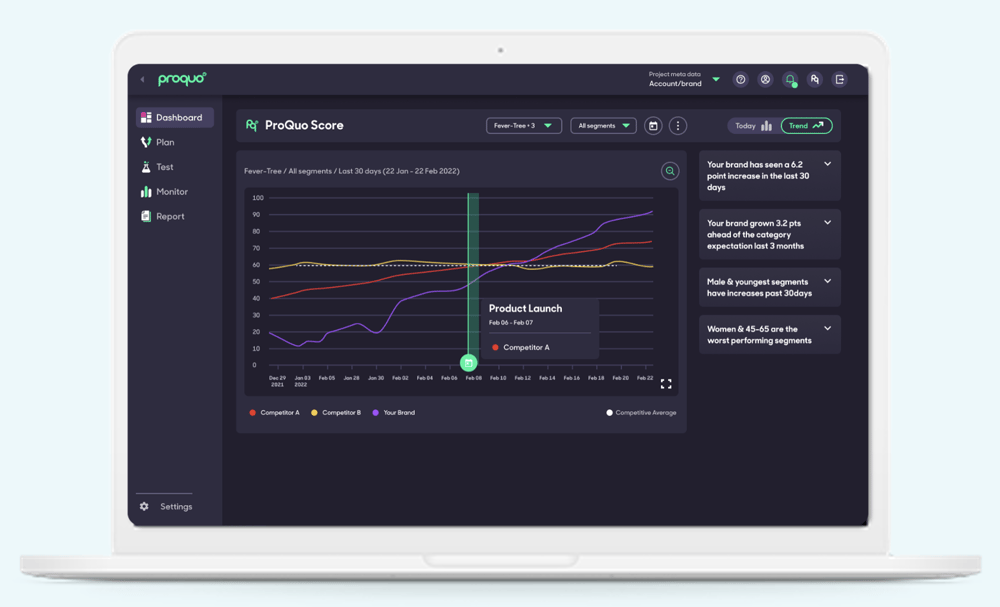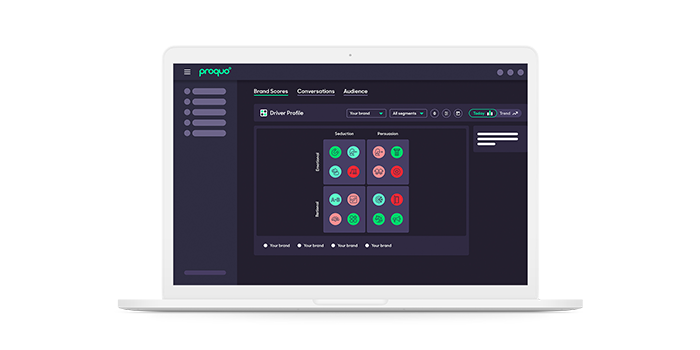

We measure how people feel and think about brands, every day, using our Brand Equity Framework.
This method is proven to drive commercial brand growth. Through the framework, you can identify strengths and weaknesses and find hidden opportunities within categories and against competitors. Using this data you can easily action strategies to optimize brand performance.
In the last three months alone, we’ve evaluated over 900 brands and gathered over 24,000,000 feelings and thoughts from consumers.
Through many years of research and testing, we have identified 16 attributes that define how people feel about brands. We call these the 16 Equity Drivers.
When we interact with consumers, it's this framework that guides our data collection.
These Drivers give you granularity into how your brand is performing, showing you what areas need improvement in comparison to competitors and your category, and what you can do to supercharge your brand’s growth.

95% of purchasing decisions are made via our System 1 - the subconscious part of our brain, which is also where our feelings reside.
Although we use our System 1 to make these decisions, we also rely on our System 2 to rationalize these decisions. This part of our brain activates our conscious thoughts.
Capturing people’s thoughts about a brand is relatively straightforward. Capturing their feelings, however, is notoriously hard.
We use an industry-leading Implicit Response Timing approach when asking people how they feel about your brand.
This form of IRT leads to cleaner data, as it eliminates 20-30% of inaccurate responses compared to the industry standard of 7-8%.
To capture consumer thoughts in detail, we also ask in-depth open-ended questions about each brand.
Taking this ‘Dual Systems’ approach, being rigorous with our data quality, and applying the 16 Driver framework is what gets your brand the most actionable and accurate data possible.
© 2020-2023 ProQuo AI International
All rights reservedWebsite by Blend